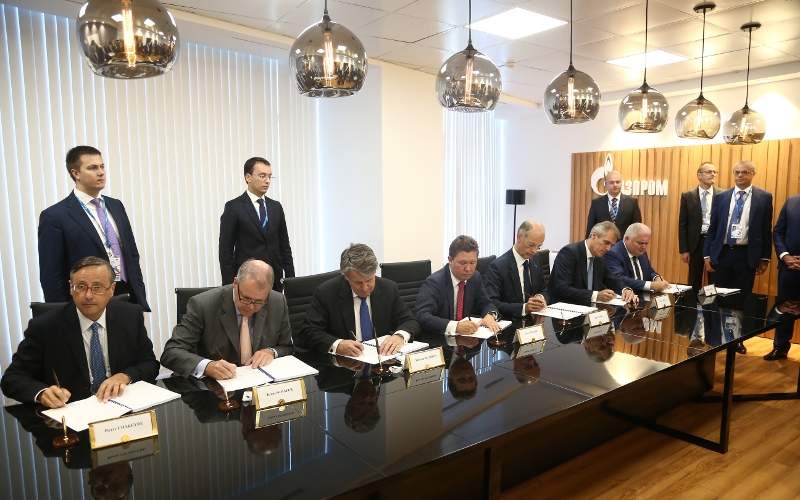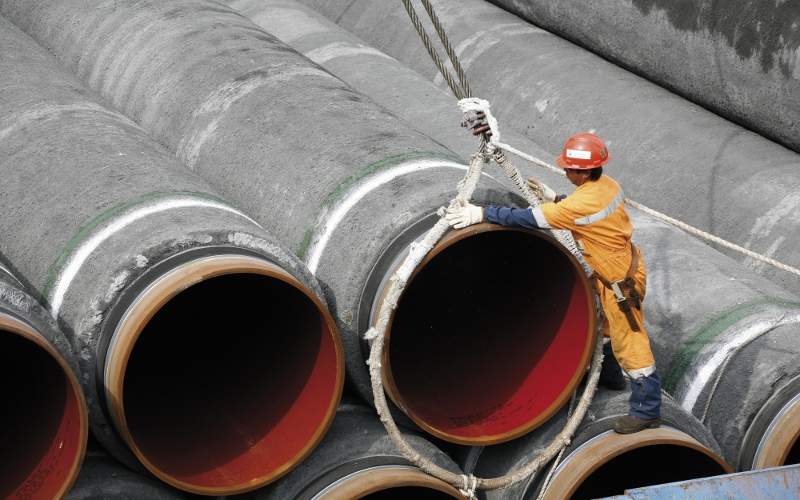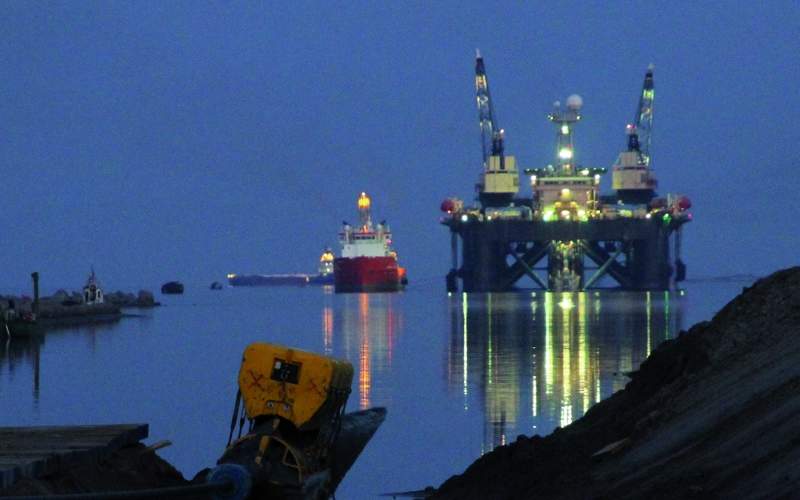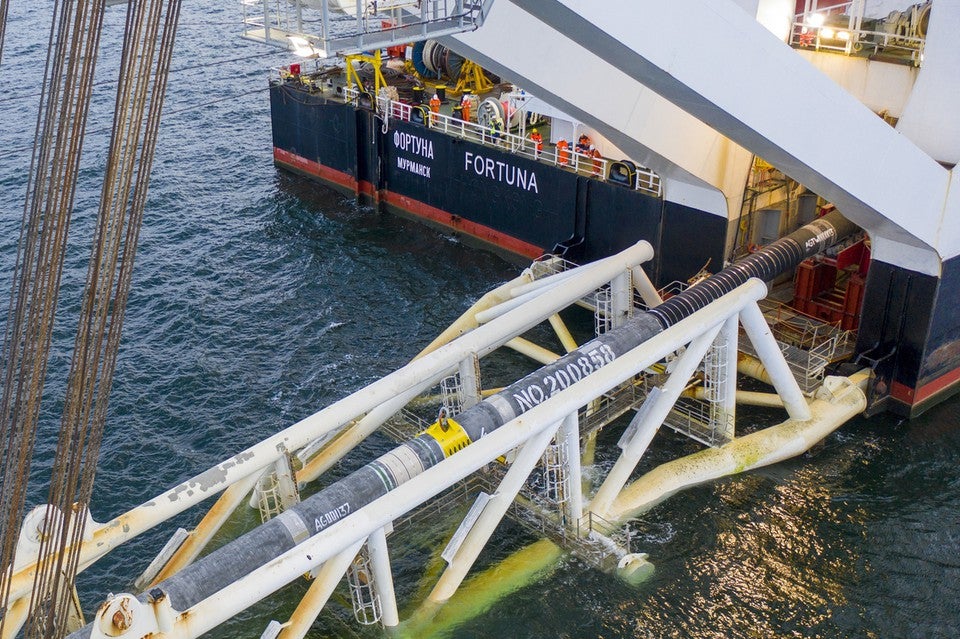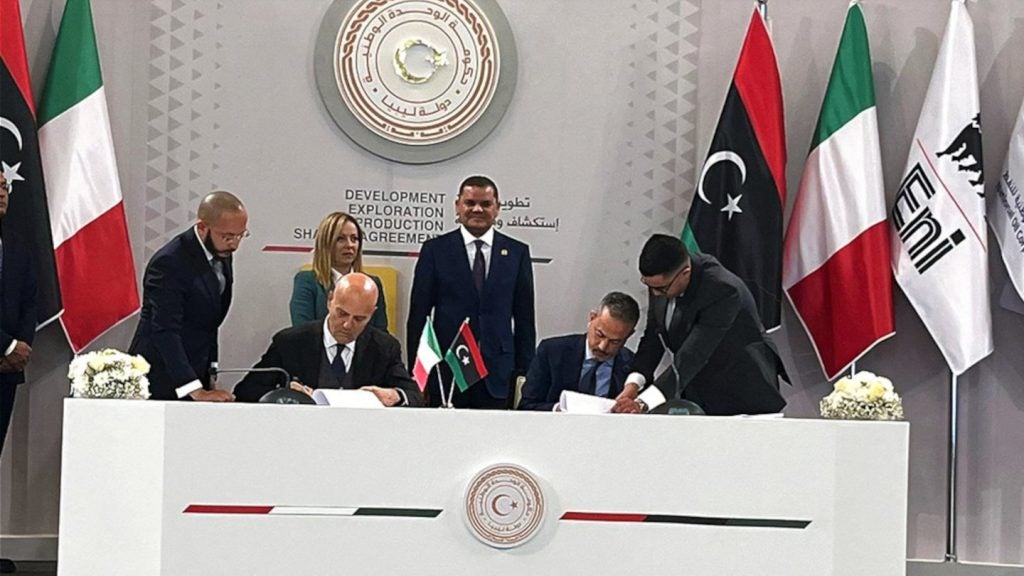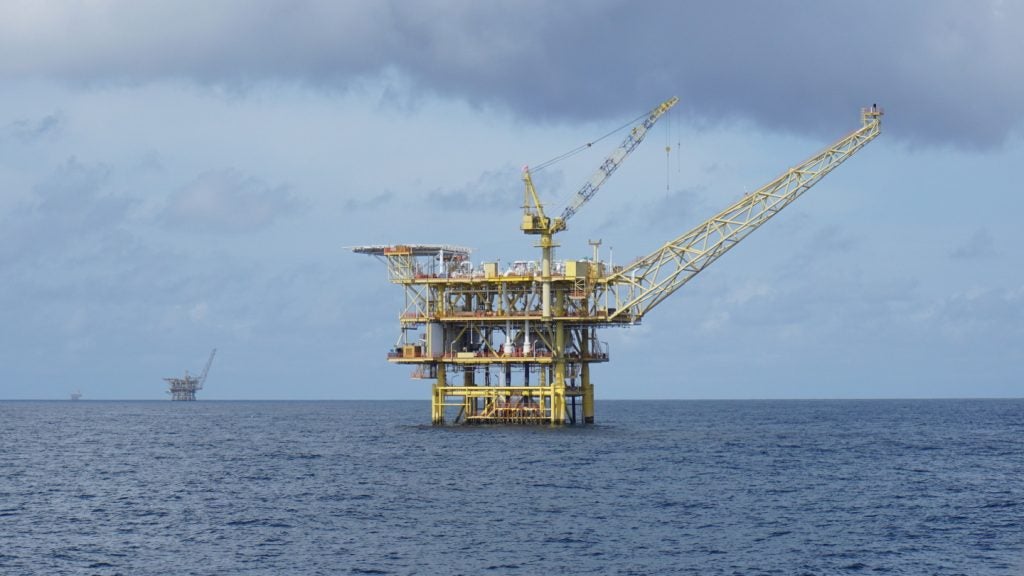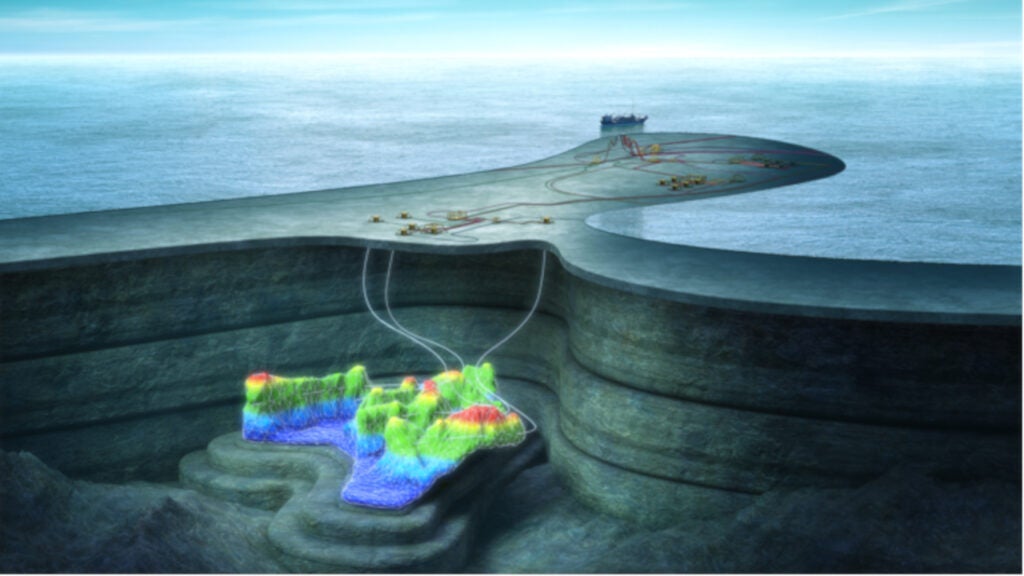Understand the impact of the Ukraine conflict from a cross-sector perspective with the Global Data Executive Briefing: Ukraine Conflict
Nord Stream 2 is a 1,200km-long offshore natural gas pipeline constructed to connect Europe to the world’s largest reserves in Northern Russia. It is an expansion of the existing Nord Stream pipeline and is expected to supply energy to approximately 26 million households a year, with a capacity of 55 billion cubic metres (Bcm). The energy delivered by the proposed infrastructure project will be equivalent to the amount of energy transported using between 600 and 700 liquified natural gas (LNG) tankers.
Russia’s state-owned Gazprom completed the construction of the €9.5bn ($11bn) pipeline in September 2021 and will own and operate it through its subsidiary Nord Stream 2.
Gazprom invested more than half of the pipeline cost while the remaining was invested jointly by Engie, OMV, Royal Dutch Shell, Uniper, and Wintershall.
The pipeline was expected to enter service in 2022 with an aim to deliver gas to European consumers for at least 50 years. Germany, however, announced the halt of the pipeline certification due to Russia’s military operation in Ukraine in February 2022.
Nord Stream 2 pipeline route
Nord Stream 2 follows the route laid down by the Nord Stream pipeline and runs through the Baltic Sea from the St Petersburg region (Russia) to Baltic Coast in north-east Germany.
It will supply gas from the vast natural gas field of Bovanenkovo in Northern Russia’s Yamal Peninsula, which is estimated to have 4.9 trillion cubic metres (Tcm) of gas reserves. The pipeline makes a landing near Greifswald close to the German coast and has no intermediate compressor station.
The route traverses the territorial waters through the Exclusive Economic Zone (EEZ) of five countries including Russia, Finland, Sweden, Denmark and Germany.
Details of the gas pipeline
The 1,200km pipeline comprises twin-parallel lines running offshore on the bed of the Baltic Sea. With a total capacity of 55bcm of natural gas a year, the pipeline will be able to cover one-third of the new gas imports required in the next two decades.
The two pipelines of the Nord Stream 2 will have a capacity of 27.5bcm a year each and will comprise 12m-long individual pipe joints. Each pipeline is made of 100,000 coated steel pipes with 24t in concrete weight. The internal diameter of the pipeline is 1,153mm (45in) and the wall thickness is 41mm (1.6in).
Gas transportation
Gas from the pipeline will be transported to different markets within the EU. It is expected that approximately one-third of the gas reaching Germany will be transported to North-Western Europe via existing hubs. The remaining gas will be supplied to central, eastern and southern Europe and will add to the Central European Gas Hub in Baumgarten, Austria.
Nord Stream 2 pipeline project timeline
Work on the feasibility study and preparatory stages of the project commenced in 2011, which was followed by the publication of the project information document in 2013.
A shareholders agreement was signed in September 2015 by the participating entities. The delivery of the first pipes for the project was received in Germany in November 2016.
The project received construction approvals from Russia, Sweden, Finland, and Germany in August 2018. Denmark’s objections led Nord Stream to withdraw its original proposal, later proposing two new routes. The Danish Government accepted the second of these in 2019.
The offshore construction works for the pipeline started in the Gulf of Finland, with the use of pipe-laying vessel Solitaire, from September 2018.
The pipeline construction, however, was delayed with Swiss-Dutch deep-sea pipe-laying company Allseas suspending work on the project in December 2019 following sanctions announced by the US in the same month on the companies engaged in the Nord Stream 2 project. The US saw the pipeline as a geopolitical weapon in the hands of Russia and hence imposed sanctions to protect Europe’s energy security.
Gazprom restarted construction using Russia’s own pipe-laying vessel Fortuna in January 2021 and completed the pending 160km stretch in Danish waters as well as works on pipeline endpoints in Russia and Germany in September 2021.
Contractors involved
Kvaerner was awarded a contract worth $73m in 2017, for the civil, mechanical and piping works for onshore facilities at the export landfall of the pipeline in Russia.
Europipe, Mülheim, United Metallurgical Company, Chelyabinsk Pipe-Rolling Plant, and Chelyabinsk were awarded contracts to supply steel pipes for the two pipelines in March 2016. The contract included the delivery of 2,500km of large-diameter pipes weighing approximately 2.2Mt.
Allseas was awarded a contract by Nord Stream to perform offshore pipe-laying works for the pipeline project in February 2017. The contract also included the provision of pipe-laying vessels, Solitaire, Pioneering Spirit, and Audacia.
Wasco Coatings Germany was contracted in September 2016 to provide concrete weight coating services and pipes for the Nord Stream 2 project. In June 2017, Blue Water Shipping was awarded a $46m subcontract by Wasco Coatings for handling, storage, and transportation of the pipeline segments.
Bokaalis-Van Oord was awarded the $291m rock placement contract for the Nord Stream 2 pipeline project in July 2017.
Saipem was contracted to provide the pipe-laying vessel C10 for the project in August 2017.
Controversies around Nord Stream 2 pipeline project
The Nord Stream 2 project has been surrounded by controversies since its inception. Ukraine filed a lawsuit with the Energy Community Secretariat seeking action against the construction of the pipeline in February 2016. It also appealed to the European Commission to terminate the gas project as it is against Ukraine’s interest. The route of the pipeline circumvents certain nations such as Ukraine, which stand to lose high-transit fees.
The governments of ten European countries sent a letter to the European Commission in November 2015 stating that the pipeline project is against the interests of the EU. The European countries objecting to the pipeline other than Ukraine included Bulgaria, the Czech Republic, Estonia, Greece, Hungary, Latvia, Lithuania, Poland, Romania and Slovakia.
The pipeline is still awaiting certification by the EU, whose official position on the project has been that it will not stop the pipeline so long as the project complies with the EU law and the German energy regulator decides to allow its operation.
In another blow to the project, Poland’s Office of Competition and Consumer Protection (UOKiK) imposed a €6.5bn ($7.5bn) fine on Gazprom in October 2020 alleging that the Nord Stream 2 joint venture was implemented without the consent of the Polish Competition Authority. Gazprom, however, has appealed the ruling, the outcome of which is expected to take years to settle.

